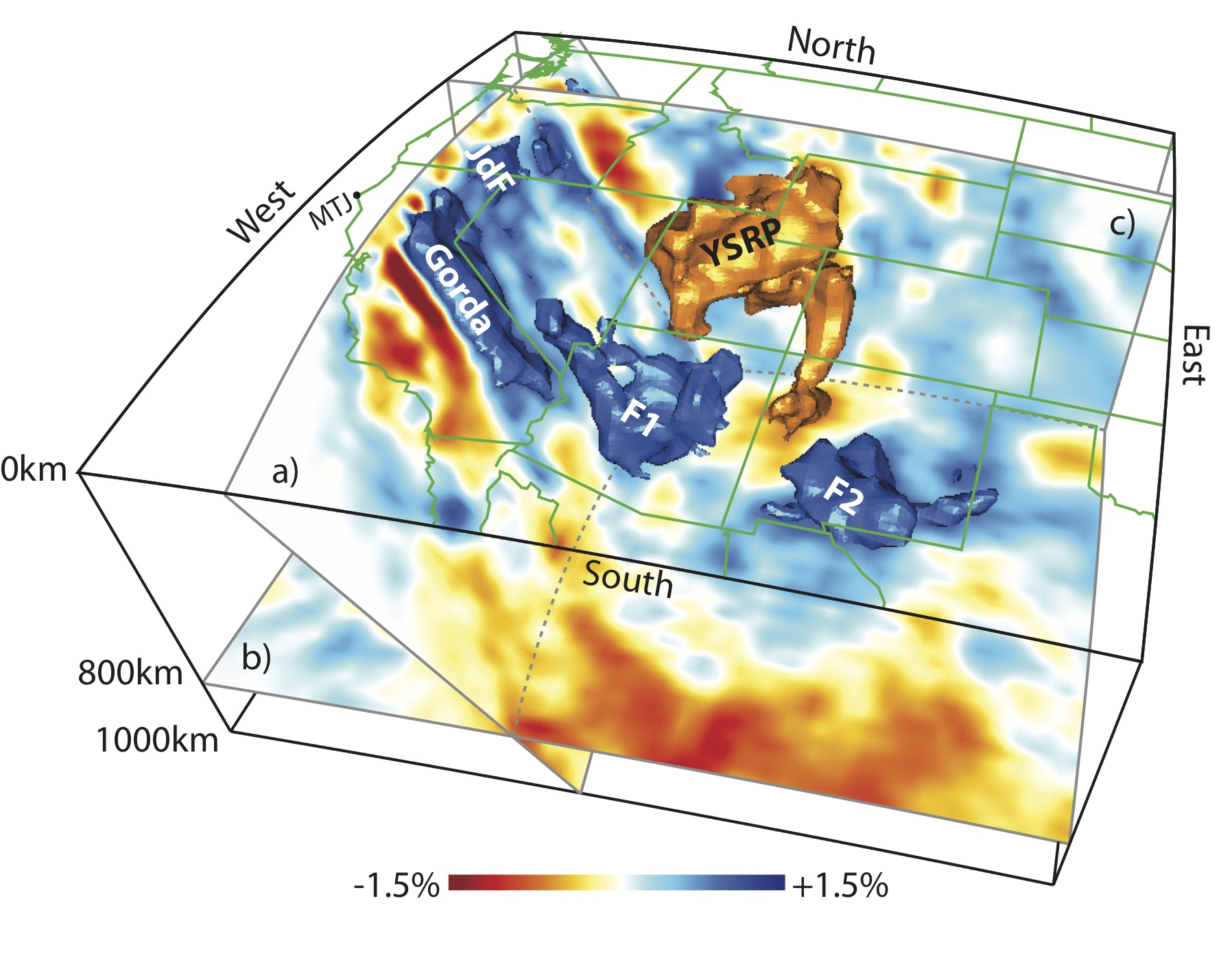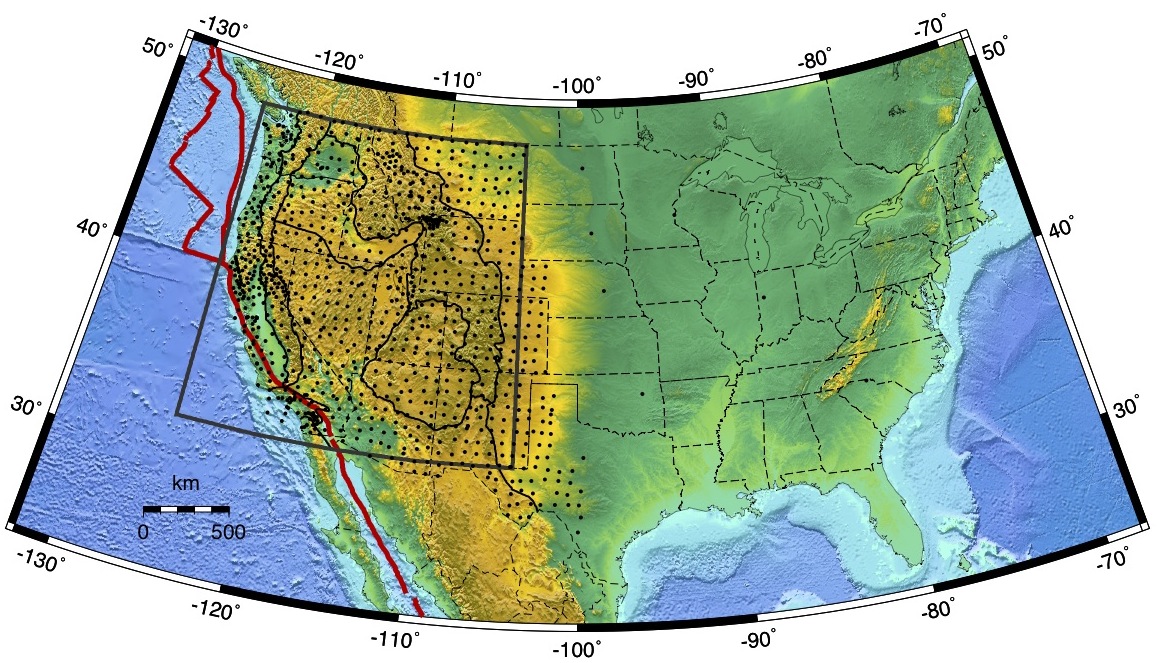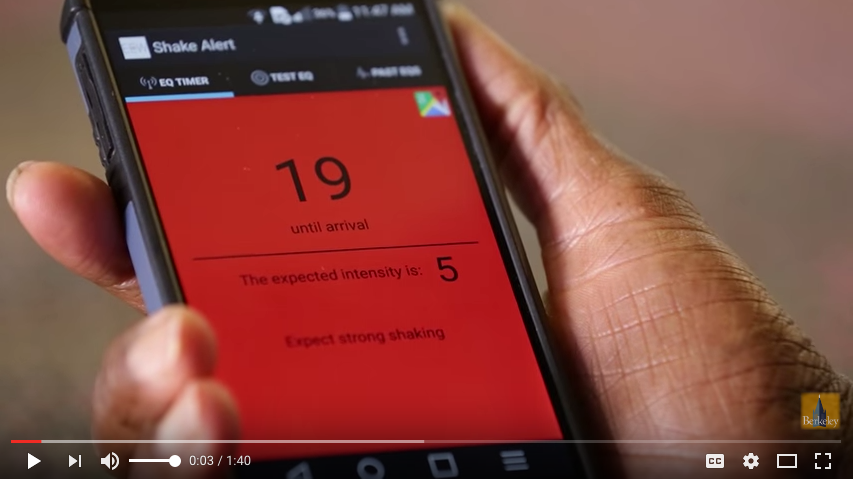Data Products and Downloads:
Finite-frequency P- and S-velocity models for the western US
DOWNLOAD THE MODEL
View the model in the IRIS EMC: DNA09
If used please cite:
Obrebski, M., R.M. Allen, M. Xue, S.-H. Hung (2010) Slab-plume interaction beneath the Pacific Northwest, Geophys. Res. Lett. 37, L14305, doi:10.1029/2010GL043489
View reprint

Model highlights:
These are the first DNA models that use finite frequency sensitivity kernels and the region of good resolution extends from the Pacific coast to east of he Rocky Mountain Front. The P- and S-velocity models show a plume extending from the lower mantle to the surface beneath Yellowstone, and a shallow and fragmented Juan de Fuca slab. The complex geometry is interpreted as being due to interactions between the plume and slab and can explain the unusual characteristics of the Cascadia subduction system including the absence of deep earthquakes and trench-perpendicular orientation of seismic anisotropy.
Model specifications:
- Parameters: DNA09-P and DNA09-S are P- and S-velocity models
- Coverage: Good resolution extends from the Pacific coast to beyond the Rocky Mountains (~105 deg W), from the Mexican boarder (31 deg N) to the Canadian boarder (49 deg N).
- Data source: More than 1000 stations where used from the USArray transportable array, regional seismic networks, and temporary seismic deployments.
- Data type: Relative traveltimes of teleseismic body waves (P, S and SKS) are used to constrain the model from about 100 earthquakes.
- Inversion: Finite frequency sensitivity kernels are used in a damped (but not smoothed) LSQR inversion.
- Resolution: The model can resolve mantle structure to a depth of ~1000 km and with a lateral and vertical resolution of ~200km.

